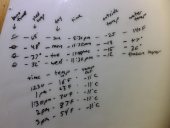
Permies' kickstarter is live!








 1
1









God of procrastination https://www.youtube.com/watch?v=q1EoT9sedqY


















God of procrastination https://www.youtube.com/watch?v=q1EoT9sedqY










 1
1




God of procrastination https://www.youtube.com/watch?v=q1EoT9sedqY









God of procrastination https://www.youtube.com/watch?v=q1EoT9sedqY




































God of procrastination https://www.youtube.com/watch?v=q1EoT9sedqY



















|
this tiny ad cannot hear you because of the banana
Rocket Mass Heater Resources Wiki
https://permies.com/w/rmh-resources
|







